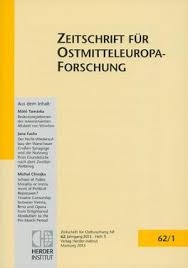Migration, Gewerbepolitik und Industrialisierung. Die letze Phase der West-Ost-Wanderung und die Anfänge des mittelpolnischen Textilindustriereviers (1815-1850)
Migration, Commercial Policy and Industrialisation The Last Phase of the West-East Migration and the Beginnings of the Textile Industry Area in Central Poland (1815-1850)
Author(s): Peter KriedteSubject(s): Labor relations, 19th Century, Migration Studies, Asylum, Refugees, Migration as Policy-fields
Published by: Verlag Herder-Institut
Keywords: Migration; Commercial Policy; Industrialisation; West-East Migration; Textile Industry; Central Poland (1815-1850);
Summary/Abstract: During the final phase of the migration to the east (1815-1850), a textile industry area formed in Central Poland, of which Lodz was to develop as its centre. Working with the findings of research into historical migration, the present study analyses how the area came into being in the final decades, and, on the basis of the proto-industrialisation theory, the conditions which favoured, at first, the production of woollen cloth, and later of cotton textiles in this industrial region. First of all it was the product of a development strategy followed by the brokers and entrepreneurs designed to catch up economically with their neighbours in the west. They relied on the systematic exploitation of a border protected by a tariff barrier as a competitive advantage. Together with this they resorted to a long-standing, tried and tested method: the encouragement of the immigration of skilled labour of all kinds. Here, we should distinguish between two groups and two phases of migration, which admittedly overlapped to a certain extent: the immigration of cloth makers between 1815 and 1830 and that of linen weavers and spinners between 1818/19 and the second half of the 1840s. Thanks to this migration, the incipient industrialisation in the 1820s benefited from an advantage lacking in other areas, that of the local availability of labour, brokers and entrepreneurs. Although the system of production that arose in the wake of this industrialisation, was centered on individual enterprises, the state and its agencies (including the central Imperial administration in St Petersburg), local authorities and major land owners played a role in it as powerful outsiders. Thus when researching the deeper reasons for the rise of the textile industry area in Central Poland, it is not enough only to direct one’s attention to individual enterpreneurs such as those who migrated from neighbouring regions and from the Rhineland, but one must consider the system of production as a whole and all those who played a role in it, not the least important of whom were the Jewish brokers, together with the non-free-trade institutional arrangements which characterised it, and at whose heart stood the policy of protection.
Journal: Zeitschrift für Ostmitteleuropa-Forschung
- Issue Year: 61/2012
- Issue No: 2
- Page Range: 163-218
- Page Count: 56
- Language: German

